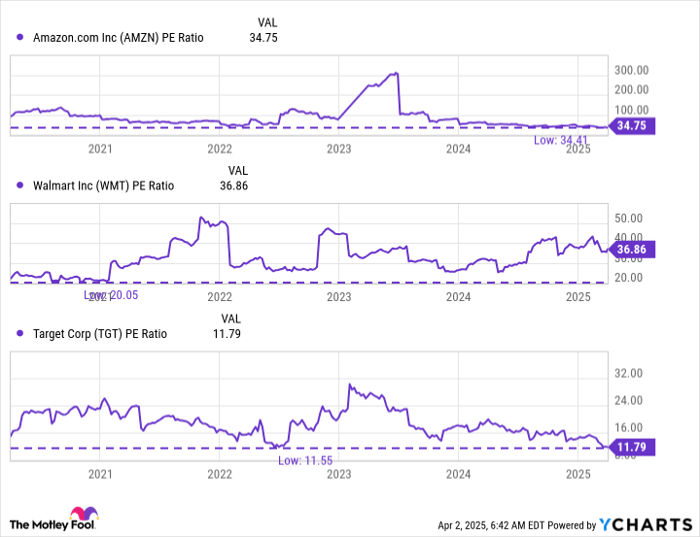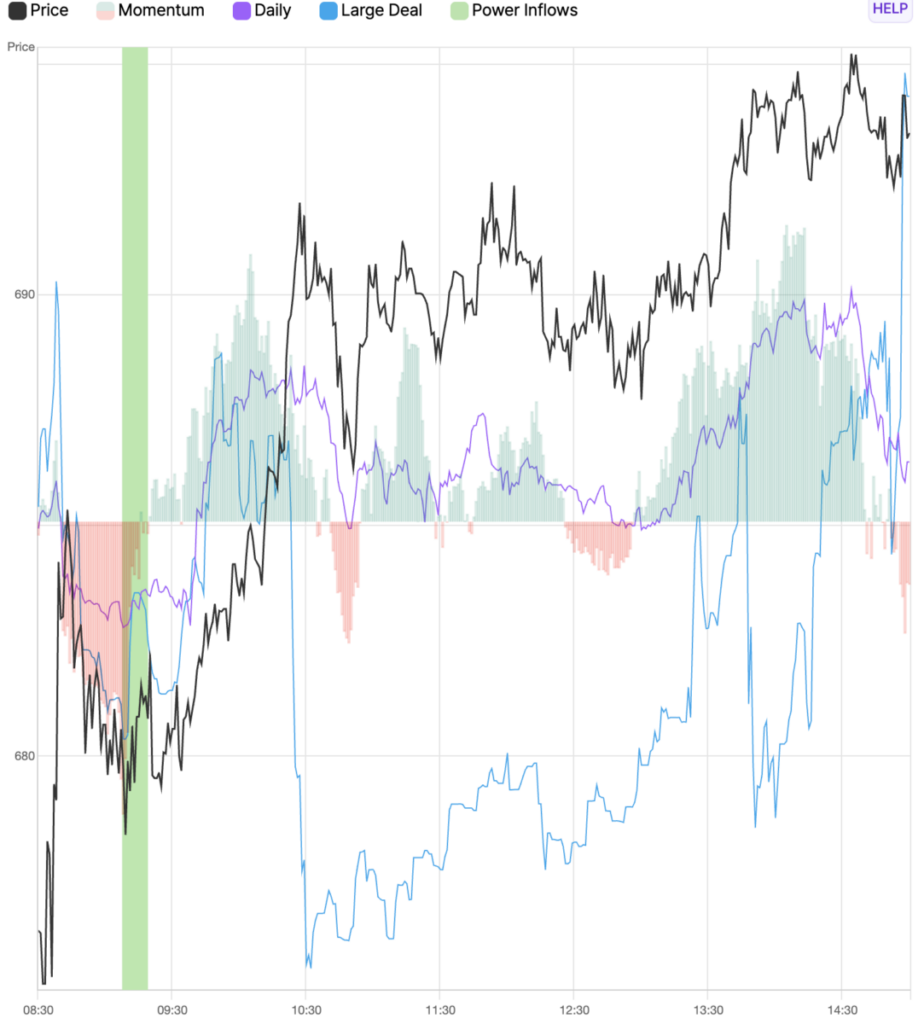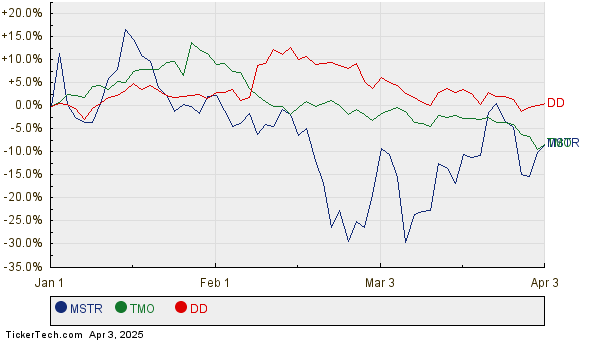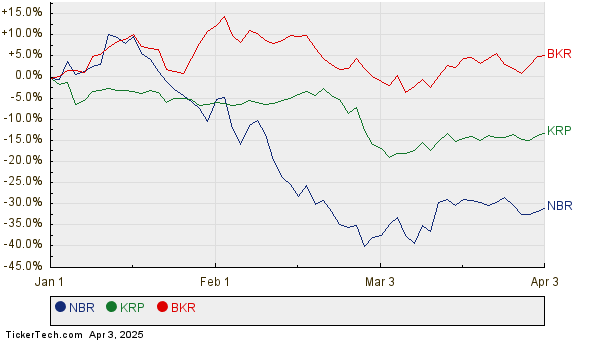Retail Giants Face Stock Declines Amid Tariff Concerns
Amazon (NASDAQ: AMZN), Walmart (NYSE: WMT), and Target (NYSE: TGT) all experienced stock declines exceeding 10% last month, as reported by S&P Global Market Intelligence. The overall market has struggled, falling by 5% in March, primarily due to concerns over tariff discussions. Given the potential ramifications of tariff changes, these major retailers are facing accelerated declines.
Market Reactions to Tariff Speculations
Anticipation surrounds President Donald Trump’s comprehensive tariff announcement, heightening market volatility. Among the three mentioned stocks, only Target lacks international operations. Conversely, Amazon and Walmart operate extensively overseas. However, Target still faces tariff implications due to its reliance on imports.
Target led in stock decline, dropping 16%. For years, the company has grappled with various economic challenges, notably decreasing discretionary spending among consumers. Although it reports steady growth in grocery segments, its core offerings focus more on discretionary categories like housewares, where consumer spending remains restrained. The difficulty in boosting sales and profitability may result in further strain from new tariff measures. In fiscal 2025 (ending February 1), Target’s comparable sales increased by 1%, yet its earnings per share (EPS) fell by 19%. Recently, the company unveiled a strategic overhaul, emphasizing new styles, selections, and its omnichannel shopping experience, which all hinge on improved economic conditions, making the future uncertain.
Amazon and Walmart recorded declines of 10.4% and 11%, respectively, last month. Despite these drops, both companies continue to perform steadily. Notably, Amazon’s diverse business model, which includes Amazon Web Services (AWS) and its emerging generative artificial intelligence (AI) sector, may insulate it from severe tariff repercussions. Last year, AWS sales grew by 19%, contributing to an overall company growth of 11%.
Walmart, recognized as the largest U.S. company by sales and heavily focused on consumer staples, may similarly weather tariff impacts more effectively. In fiscal 2025 (ending January 31), Walmart’s sales rose by 5.1%, and EPS increased by 13%. With nearly 5,000 U.S. stores functioning as distribution centers, Walmart has expanded its e-commerce success. Its global presence includes close to 11,000 stores across various international markets, despite also relying on imports.
Investment Opportunities Amidst Market Declines
Each of these stocks presents a viable option for investment. Amazon’s potential in AI, combined with its robust e-commerce foundation, offers a promising outlook, while Walmart stands out as a stable value investment. Meanwhile, Target represents a potential turnaround opportunity.
At their current pricing, stocks for Amazon and Target are trading below their historical average price-to-earnings (P/E) ratios, nearing five-year lows. Interestingly, despite decreasing prices, Walmart does not appear cheap compared to its historical averages.

AMZN PE Ratio data by YCharts
All three companies have the capacity to absorb tariff impacts, and their stocks are poised for recovery. Investors with a high risk tolerance might consider purchasing Target stock now, while those seeking stability could opt for Walmart or Amazon. It’s important to remain cautious, as short-term disruptions may continue in the wake of economic uncertainties, and immediate gains shouldn’t be expected. However, for patient investors, the long-term growth potential remains significant.
Should You Invest $1,000 in Amazon Now?
Before considering an investment in Amazon, you should note this perspective:
The Motley Fool Stock Advisor analyst team recently identified their selection of the 10 top stocks for this investment cycle—and Amazon is not among them. The selected stocks possess the potential for considerable returns in the future.
For instance, Nvidia was highlighted in this list on April 15, 2005… if you invested $1,000 at that recommendation, you’d have $664,271!
Stock Advisor equips investors with clear strategies for success, including portfolio building guidance, regular analyst updates, and two new stock picks each month. This service has more than quadrupled the return of the S&P 500 since 2002.* Don’t miss out on the latest top 10 list, available when you join Stock Advisor.
View the 10 stocks »
*Stock Advisor returns as of April 1, 2025
John Mackey, former CEO of Whole Foods Market, an Amazon subsidiary, serves on The Motley Fool’s board of directors. Jennifer Saibil holds positions in Walmart. The Motley Fool has positions in and recommends Amazon, Target, and Walmart. The Motley Fool has a disclosure policy.
The views and opinions expressed herein are those of the author and do not necessarily reflect those of Nasdaq, Inc.




